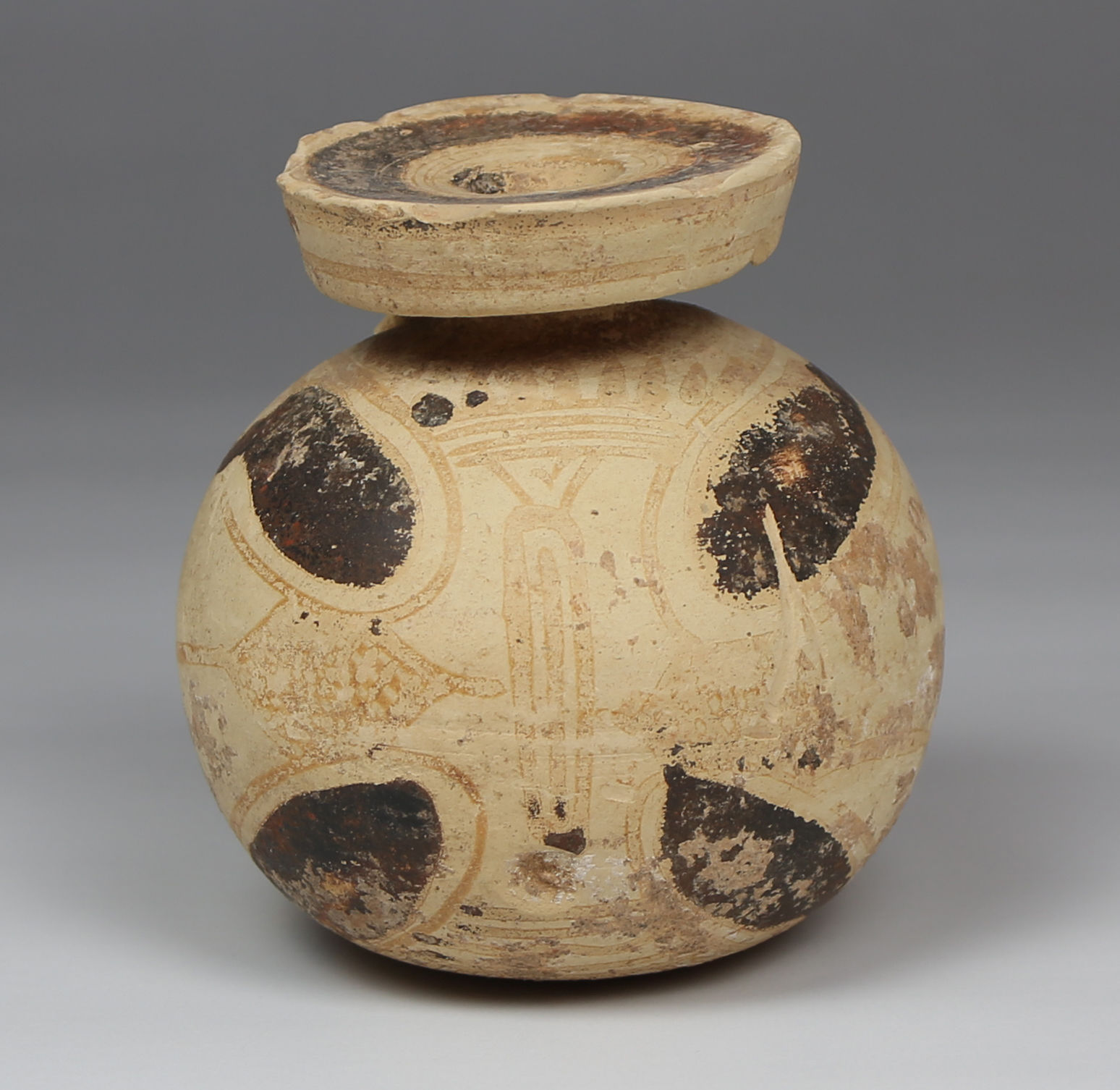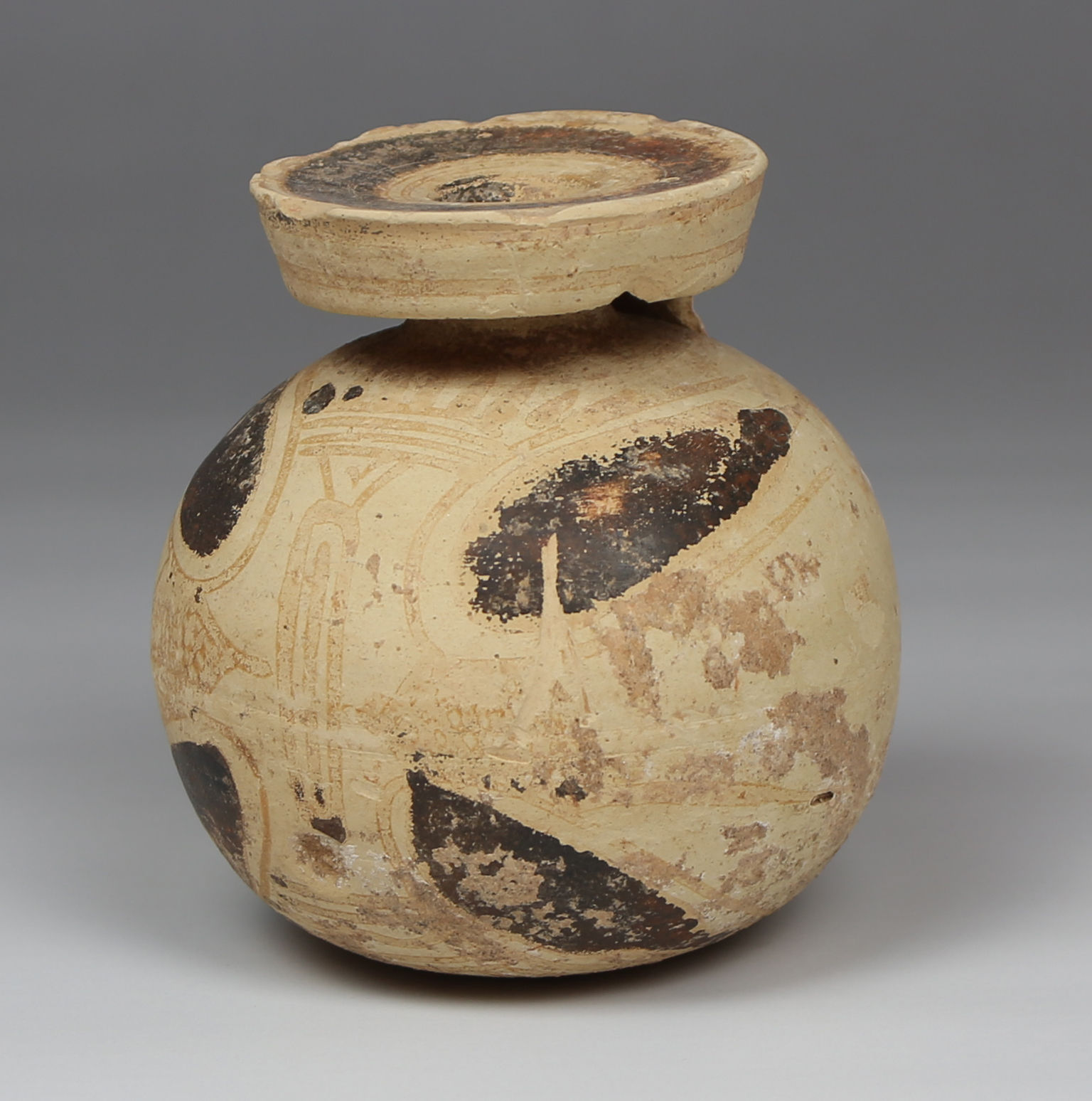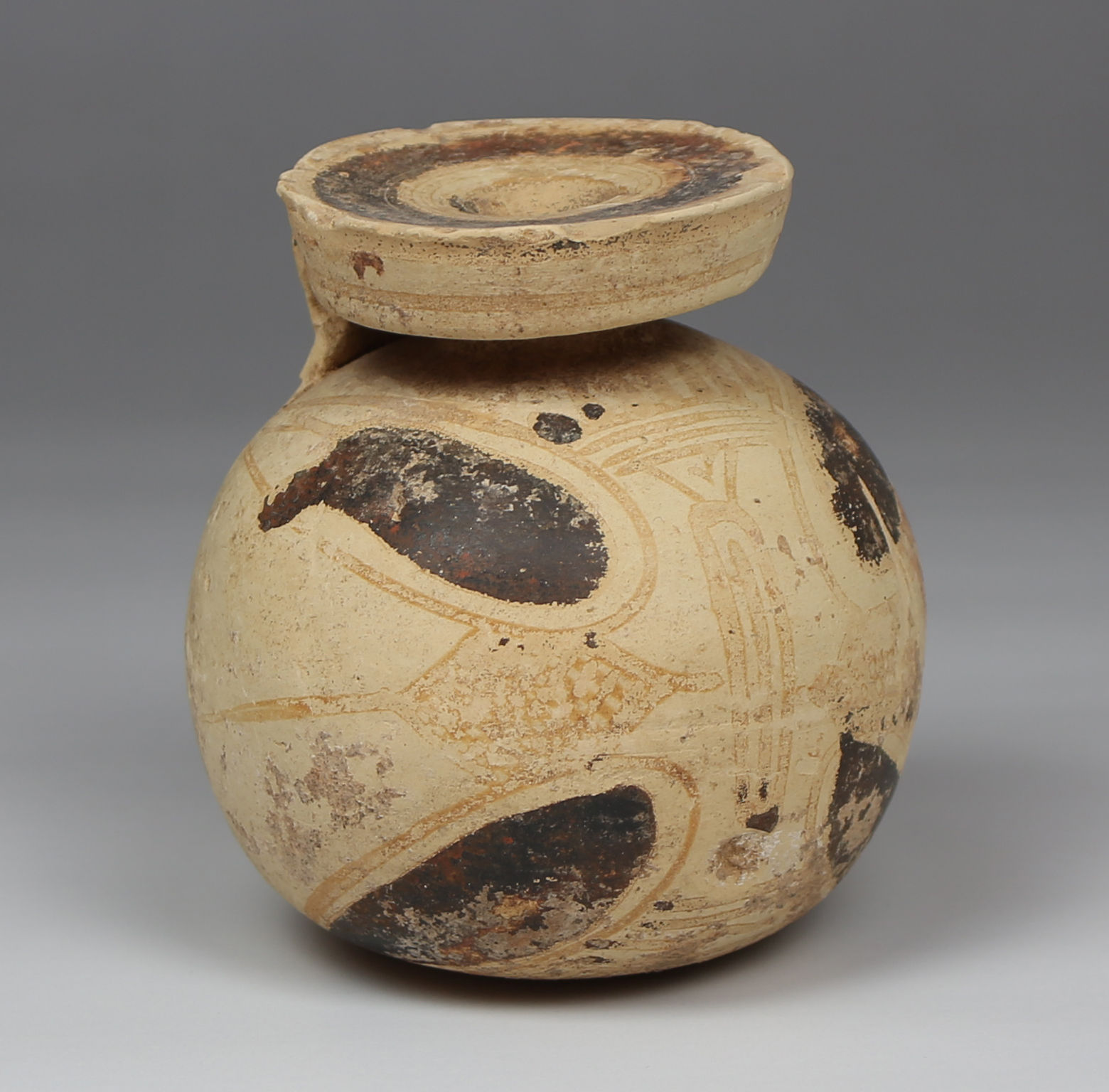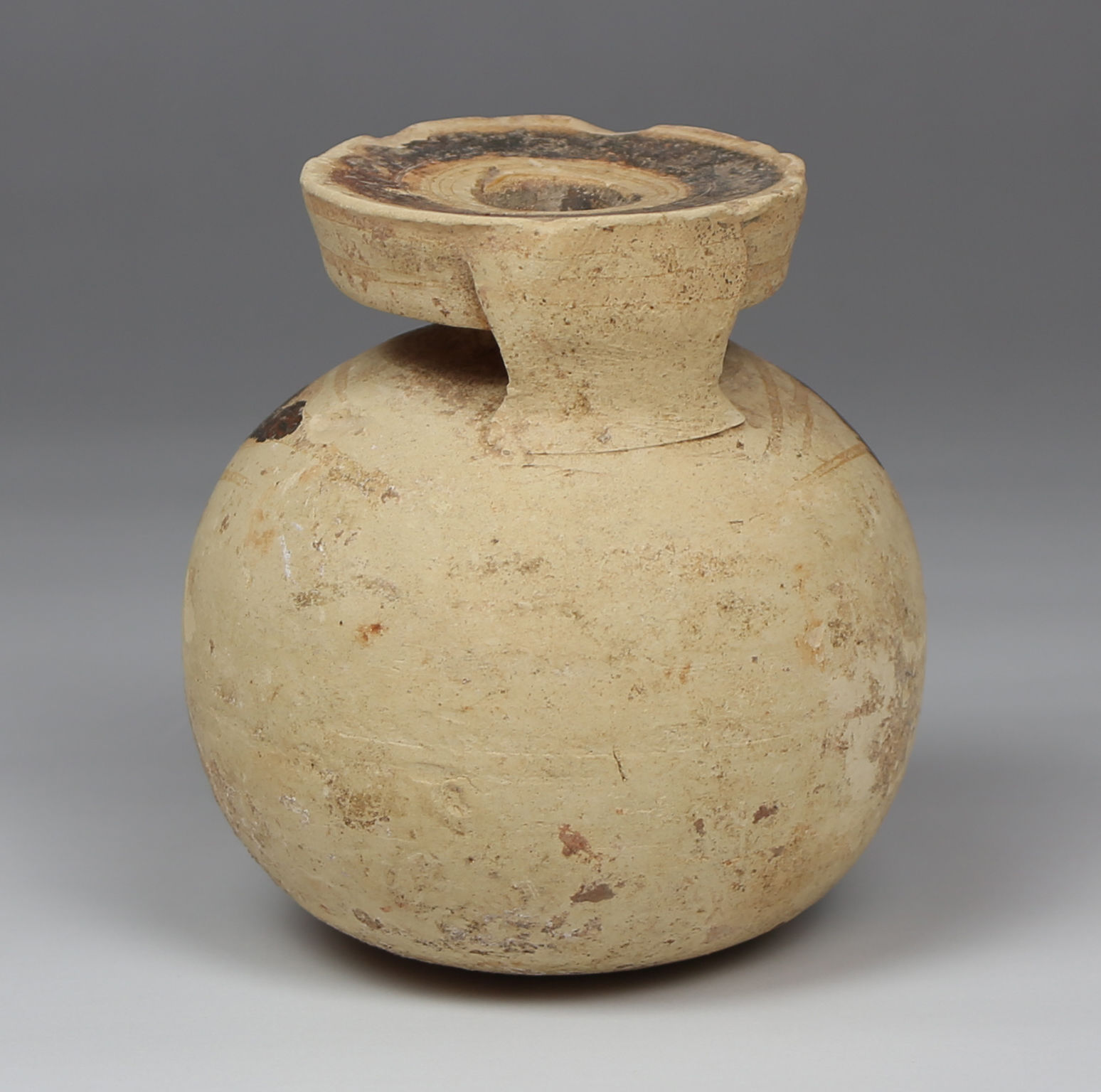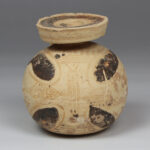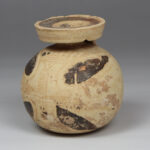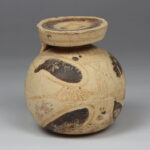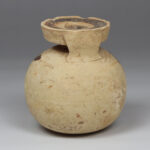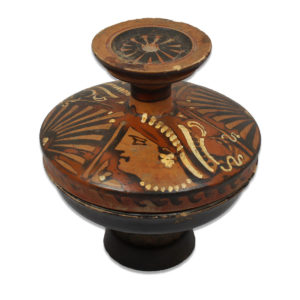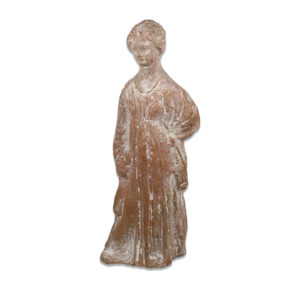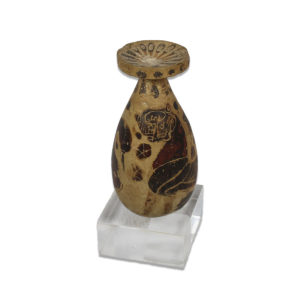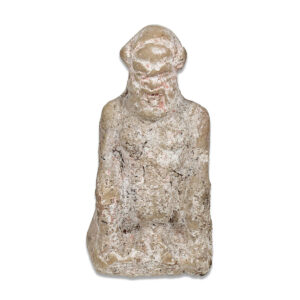Description
| ITEM | Aryballos with quatrefoil motif |
| MATERIAL | Pottery |
| CULTURE | Greek |
| PERIOD | 6th Century B.C |
| DIMENSIONS | 70 mm x 63 mm |
| CONDITION | Good condition |
| PROVENANCE | Ex Swiss private collection, acquired in 1970s |
| BIBLIOGRAPHY | THE MUSEUM OF MILAN Online collection Accession number A 0.9.1824 |
The aryballos with a quatrefoil motif is a distinctive type of ancient Greek vessel that emerged during the Geometric and Orientalizing periods (circa 900–600 BCE). The term “aryballos” refers to a small, globular container used to store oils, perfumes, or other precious substances. The quatrefoil motif, characterized by a four-lobed or four-petal design, was a common decorative element on these vessels. Aryballoi with quatrefoil motifs were often crafted from terracotta and decorated using the black-figure or red-figure techniques, which involved selectively applying slip (a liquid mixture of clay and water) to create contrasting images.
The quatrefoil motif on these aryballoi was not merely decorative but held symbolic and cultural significance. The motif is reminiscent of floral patterns and was likely inspired by nature. The four-lobed design could represent various symbolic concepts such as symmetry, balance, or the four seasons. Additionally, in ancient Greek art, the use of geometric and floral motifs often carried deeper meanings related to religious beliefs, mythological narratives, or social customs.
These aryballoi were practical as well as ornamental, serving a utilitarian purpose in daily life. They were designed for the storage and transportation of oils and perfumes, making them valuable personal items. The small size and portability of aryballoi with quatrefoil motifs suggest that they may have been used in grooming rituals or as offerings in religious ceremonies.


